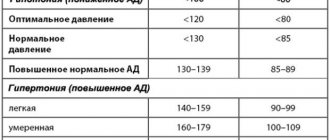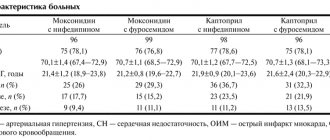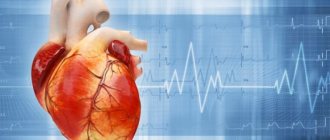Types of nosebleeds
A headache and bloody nose are a typical symptom of many diseases and conditions. Clinical signs can be used to preliminarily determine what caused this symptom. Depending on the type of nosebleed, first aid tactics will differ. So, it is necessary to determine in which area the vessel is damaged when blood appears from the nose. Depending on this, bleeding may be:
- anterior – associated with damage to small capillaries in the anterior parts of the nose, does not require medical assistance;
- posterior - occurs when vessels are injured, including large ones, which are located in the posterior parts of the nose, so it is difficult to stop on your own.
During diagnosis, doctors must determine what caused the nosebleed. There are two main types of it:
- local - it is caused by injuries to the nose or damage to blood vessels in this area;
- systemic - blood appears from the nose, but the cause of this symptom is associated with systemic disorders and diseases of other organs.
Nosebleeds can be capillary, venous or arterial. More often they are associated with damage to small capillaries, other types occur only during serious traumatic brain injuries.
Preventive measures
Due to the increased dryness of the air, nosebleeds may also occur. For example, when the heating is turned on, the air in apartments and offices becomes much drier than at other times. A properly selected air humidifier, placing wet towels on radiators, spraying the room with a spray bottle, frequent ventilation or indoor plants will help improve the situation.
When the nasal mucosa dries out, crusts can form on it. To avoid this phenomenon, try periodically instilling 2-3 drops of rosehip oil or sea buckthorn oil.
If your bleeding is due to increased fragility of blood vessels, consult your doctor. Rutin and ascorbic acid strengthen blood vessels well.
If blood clotting is reduced, it is recommended to drink tea from herbs (yarrow, plantain, nettle, knotweed, fruits and leaves of sea buckthorn). A 5–10% solution of calcium chloride helps reduce the permeability of vessel walls. It must be taken after meals, 2-3 times a day, 1 teaspoon.
Blood can also clot poorly if there is a lack of vitamin K. Eat lettuce, spinach, bananas, all types of cabbage, avocado, soy, wheat bran, eggs, meat, olive oil and dairy products. And you will help your body cope with this problem.
Causes of headaches and nosebleeds
A headache and bloody nose are a sign of various disorders in the body or its reaction to external stimuli. This symptom can occur even in a healthy person, but in the form of an isolated case. The condition is considered serious if nosebleeds occur frequently, are difficult to stop, and the patient suffers from constant headaches. There are several conditions in which similar symptoms may appear:
- inflammatory diseases that affect various structures of the nose;
- vascular diseases, which reduce their strength and elasticity;
- exposure to environmental factors;
- systemic diseases of the hematopoietic organs, neoplasms and other serious pathologies;
- injuries and their consequences.
Bleeding can be stopped regardless of its origin. However, it is important to understand why this symptom occurs, especially if it occurs frequently and is accompanied by a headache. To do this, it is worth undergoing a comprehensive examination of blood vessels and other systems. Treatment will be aimed at eliminating the underlying cause that is causing the nosebleeds and headache symptoms.
Action of external factors
The body of both a child and an adult reacts to environmental conditions and climate. These factors do not affect general well-being, but can also cause headaches and dizziness, and damage to the vascular walls. The most common conditions that cause headaches and nosebleeds are:
- too dry and hot air outdoors or indoors - it causes the mucous membrane of the nose and nasal passages to dry out, the vessels become weak and brittle;
- increased atmospheric pressure or its sharp increase also has a detrimental effect on the condition of small capillaries;
- frequent use of nasal drops or spray;
- mechanical damage to the nasal mucosa, including inhalation of small particles of sand and dust;
- ingestion of chemicals with inhaled air, often ammonia.
If in an adult, nosebleeds appear more often in response to external irritants, changes in weather conditions and stress factors, then a child’s nasal passages should definitely be examined. They may contain small foreign objects that injure the mucous membrane and cause pain in the head. First aid cannot always be provided at home. If it is difficult to remove the object, it is better to immediately go to the doctor - he has special tools with which you can carry out the procedure with minimal damage.
High blood pressure
Nosebleeds combined with severe headaches are the first sign of a hypertensive crisis. This condition is manifested by a sharp increase in blood pressure to 180/120 mm. rt. Art. and more. The vascular walls cannot withstand blood pressure and are damaged. First of all, small capillaries rupture, which are located in the nose, on visible mucous membranes and under the skin.
The most informative way to determine a hypertensive crisis is to measure blood pressure, including at home. This condition can be suspected if the following symptoms occur:
- severe, pressing headache - can be concentrated in the temples or spread to the entire surface of the head;
- nausea, dizziness, general weakness;
- redness of the skin and mucous membranes;
- arrhythmia, rapid pulse;
- the appearance of bruises under the skin and on the mucous membranes, nosebleeds.
Hypertension is a chronic condition in which the patient needs to constantly monitor blood pressure. Doctors recommend avoiding stress, intense physical activity, and sudden changes in weather conditions. Drug treatment is prescribed to reduce blood pressure.
Injuries
One of the common causes of headaches and nosebleeds is mechanical damage to the mucous membrane and structures of the nose. This can occur due to a blow or fall, or foreign objects entering the nasal passages. The severity of the injury determines how easy it is to stop the bleeding. If the nasal septum, cartilage and other structures remain intact, the damage is not dangerous and heals within a few days.
Similar symptoms can develop with closed head injuries. Bruise and concussion are the mildest stages, but require medical attention. You should consult a doctor if the following symptoms appear after a blow to the head:
- acute headache, dizziness;
- nosebleeds;
- nausea, vomiting;
- blurred vision, dark circles or spots;
- fainting, including short-term ones.
After a traumatic brain injury, it is necessary to remain in bed and completely avoid any type of physical activity. If the injury is mild, you can gradually return to your normal lifestyle after a week. If symptoms persist or worsen, it is important to undergo an examination, assess the degree of injury to brain structures, and determine the presence of hematomas. The doctor may prescribe medications to improve cerebral circulation, painkillers and anti-inflammatory drugs, and medications to relieve swelling.
Inflammatory processes
One of the reasons why headaches and nosebleeds occur is inflammation of the mucous membrane. Often the process is associated with a viral infection that affects the respiratory tract. Flu, colds, and seasonal infectious diseases are accompanied by a runny nose, swelling of the mucous membranes, headache and difficulty breathing. This leads to weakness of the capillaries and damage to their walls. The duration of the disease is on average 3–15 days, after which all symptoms disappear.
Nosebleeds can occur with prolonged colds. Their cause is the frequent use of vasoconstrictor nasal drops or sprays, which also cause dryness of the nasal mucosa. During the course of treatment, you should read the instructions and avoid overdose of medications.
Diseases of the cardiovascular system
Doctors recommend getting tested if headaches and nosebleeds occur frequently. These symptoms may indicate chronic diseases of the blood vessels, heart and hematopoietic organs. They lead to weakness of the vascular walls, their damage when blood pressure rises, as well as a deterioration in the blood supply to certain areas.
A full examination may reveal serious violations:
- diseases of the blood system, including leukemia, hemophilia, decreased platelet levels;
- congenital or acquired heart defects;
- lack of certain vitamins that are involved in hematopoiesis (vitamins K, B12);
- concomitant pathologies of internal organs, including the liver;
- systemic infectious diseases that affect the condition of blood vessels (measles, rubella, lupus erythematosus).
If left untreated, the symptoms of the disease become pronounced. Headaches are accompanied by frequent fainting, changes in blood pressure, and a general deterioration in well-being. Stressful situations, overwork or physical exertion can lead to exacerbation. The patient is also advised to monitor his diet and take prescribed medications.
Allergy
Allergic reactions are the response of the immune system if it perceives normal substances as foreign. It triggers complex biochemical reactions, as when a viral or bacterial infection occurs. However, such processes cause harm to the body, as they are accompanied by inflammation, swelling of the mucous membranes, headache and other typical symptoms.
Many allergens enter the body through inhaled air. The most common ones include dust and pollen, household chemicals and dyes. They are located on the nasal mucosa, so inflammatory reactions develop in this area. A person develops a runny nose and headache, and their sense of smell worsens. Dryness of the mucous membrane and its swelling lead to vascular weakness and nosebleeds. To get rid of allergy symptoms, you should avoid contact with irritants and take antihistamines as needed.
Other reasons
Headache accompanied by nosebleeds is a typical symptom for many conditions. It is important to pay attention to additional complaints. These include difficulty breathing, shortness of breath, frequent pain in a certain area of the head, blurred vision and others. As a result of the examination, the following violations may be detected:
- polyps that are located in the nasal passages - neoplasms not only interfere with normal breathing, but also injure small blood vessels;
- migraine is a headache that occurs without a specific cause and may be accompanied by nosebleeds;
- adverse reactions during the use of certain medications;
- diseases of the endocrine system, as well as hormonal changes during pregnancy.
At home, it is not always possible to determine what caused nosebleeds and headaches. If this symptom occurs regularly, this is a reason to consult a specialist and undergo treatment. In the early stages, even serious diseases are easier to treat, so doctors do not recommend self-medicating at home.
What to do with high blood pressure
What to do if you bleed with high blood pressure? If after measurement it is very elevated, then it is more likely that this caused pressure on the vessels. In this case, it is necessary to give him medications that lower it.
If the tonometer indicates a hypertensive crisis, then you need to call an ambulance!
Pressure above normal in the victim indicates the progression of arterial hypertension. This condition can occur due to stress and overwork. You need to drink some cold water and take medications to normalize blood pressure. For example, valerian. motherwort, dibazol.
- Nosebleeds after alcohol: causes of nosebleeds and methods of control
In order for the blood to clot quickly, you can take calcium chloride. Better is a 5 or 10% solution, one or two teaspoons inside. The victim’s feet should be warm at this moment; for this it is recommended to place a heating pad on them.
It is strictly forbidden to place the victim on his back, or ask him to blow his nose. For light bleeding, just pinch the desired nostril and wait a little. This usually works within a few minutes.
Diagnostic methods
To determine the exact reason why your head hurts and your nose bleeds, your doctor will prescribe additional tests. During the initial examination, you can determine the presence of foreign objects in the nasal passages, mechanical damage or inflammation of the nasal mucosa. Be sure to tell the doctor about all the medications the patient has taken recently, head impacts, and concomitant acute and chronic diseases.
To obtain a more accurate picture, additional tests may be prescribed:
- rhinoscopy - examination of the internal structures of the nose using an endoscope (the method allows you to identify polyps, tumors, foreign objects);
- Ultrasound of internal organs if pathology is suspected;
- clinical and biochemical blood tests - necessary for preliminary diagnosis of diseases of the hematopoietic system;
- MRI, CT scan of the brain for suspected traumatic brain injury.
At the Clinical Brain Institute, you can undergo a complete diagnosis for headaches and nosebleeds. Our center has precise and modern equipment, thanks to which the results of the examination will be known in a short time.
At what pressure can epistaxis be encountered?
The nasal membrane is designed in such a way that many capillaries and small blood vessels are intertwined in it. In the case when the capillaries located near the surface of the nasal membrane become thin and fragile, epistaxis can form from the slightest stress or injury.
Hypertensive patients have weak capillaries that cover and nourish the mucous membrane, so they very often rupture, and accordingly, blood begins to pour out. In principle, this phenomenon has its own positive side: blood pressure levels decrease and the person feels much better. However, when bleeding occurs quite often, atrophy of the mucosa can occur, which provokes various serious complications.
If blood pressure is below the norm, then the picture generally looks unusual: blood vessels are compressed, the person’s face becomes pale, and bleeding begins from the nasal cavity.
Treatment of headaches and nosebleeds
Treatment tactics are prescribed individually, depending on the cause of the headache and the appearance of blood from the nose. Some measures can be taken on your own, but it is important to read the recommendations of doctors. The effectiveness of treatment will depend on the exact diagnosis and stage of the disease, as well as on compliance with all instructions.
First aid
If your nose is bleeding, you can stop it yourself. To do this, you should familiarize yourself with the simple algorithm that doctors compiled. Further measures will depend on the general well-being of the patient.
- The first step is to take a sitting position, position your head straight or tilt it slightly forward. Leaning back is contraindicated, since excess blood should come out and not flow through the throat into the digestive tract.
- The second step is to squeeze your fingers at a soft point above the wings of the nose. This will help compress the blood vessels and reduce the amount of bleeding. Pressure can be maintained for no more than 10 minutes. During this time, light bleeding will stop.
- Important advice: blood should flow freely from the nostrils; do not pinch them with fingers, a towel or other objects. You should also not blow out blood clots, even if they cause discomfort. This will create additional pressure in the vessels, which will cause the formed blood clots to break off and blood will begin to flow out at an increased rate.
- The third step is to apply a cold compress to the forehead and back of the head. The ice must be wrapped in a cloth or towel so that it does not touch the skin directly. Prolonged exposure to cold can lead to frostbite and decreased receptor sensitivity.
You should consult a doctor immediately after nosebleeds appear if they are excessive and do not stop within 15 minutes. Also at risk are people who suffer from chronic hypertension or take blood thinners. These factors lead to the fact that even mild bleeding can cause heavy blood loss.
Treatment methods
To stop bleeding in the hospital, tamponade is performed using hemostatic agents. Further treatment is prescribed individually, depending on the cause of the symptoms. The general scheme may include the following methods:
- for colds - antiviral drugs, antibiotics, antipyretic drugs, vitamin complexes;
- for hypertension - diuretics, drugs to support heart function;
- for diseases of the circulatory system - an individual scheme aimed at improving the regeneration of blood cells;
- for injuries - medications to stimulate cerebral circulation, decongestants and painkillers;
- surgical intervention is necessary to remove polyps and tumors in the nasal passages, as well as to remove foreign objects.
At the Clinical Brain Institute, it is possible to undergo treatment in a hospital setting, but in most cases it is enough to undergo periodic examinations. The patient needs to take medications according to the specified schedule, monitor his health and consult a doctor if there are any changes.
How to deal with the problem?
Slow blood clotting and lack of rapid self-destruction are a feature of nasal hemorrhages in hypotensive patients.
The algorithm for stopping bleeding involves:
seat the patient. A lying position contributes to the flow of blood into the throat and stomach, and a completely vertical (standing) position causes a rapid drop in overall pressure.- reassure the patient - severe anxiety worsens the condition;
- tilt your head down. Medical professionals do not recommend tilting back, since the opportunity to assess the severity of bleeding is lost due to fluid entering the throat and stomach;
- use a tight tamponade. A gauze pad or cotton wool is folded into a thick turunda, which is moistened in a 3% solution of hydrogen peroxide and inserted into the bleeding nostril. Mechanical compression of blood vessels (with hypotension there is no tendency to autonomous spasm) and chemical reactions with peroxide contribute to the rapid stop of epistaxis;
- after stopping the acute condition, decongestants - vasoconstrictors (for example, Oxymetazoline) are often used. The drugs are contraindicated in patients with hypertension.
Throwing the head back with massive blood loss is accompanied by the risk of choking on liquid.
If these methods are ineffective, it is recommended to call an ambulance, since in the presence of serious blood pathology, specific drug therapy is required.
Prevention methods
Most headaches and nosebleeds can be prevented by following a simple procedure. It is especially important to monitor the health of patients with chronic hypertension and bleeding disorders. They need to limit physical activity, avoid stress and nervous tension. Doctors also recommend a number of rules that will be useful even to a healthy person without any chronic diseases:
- in too hot or cold weather, use moisturizing nasal sprays; you can also buy special ointments in pharmacies;
- install equipment for air humidification in the premises - this is especially necessary when using air conditioners and heaters;
- regularly carry out wet cleaning in houses, apartments and office premises;
- give up bad habits, especially smoking, try to stay away from cigarette smoke;
- follow the instructions when using any medications, especially if their list of side effects includes bleeding (Analgin, Ibuprofen).
The Clinical Brain Institute offers individual diagnostic and treatment programs for diseases that are accompanied by headaches and nosebleeds. Our center provides comfortable conditions for each patient, including wards for inpatient treatment. Doctors are specialists of a narrow and broad profile with many years of experience in the successful treatment of diseases with similar symptoms.
How to stop bleeding during exacerbation of hypertension?
To stop it is necessary to carry out all the same steps as for routine stopping of epistaxis described above. The only difference is that it is necessary to simultaneously carry out emergency correction of the underlying disease by taking antihypertensive drugs (for example, beta blockers, calcium channel blockers, angiotensin-converting enzyme inhibitors, angiotensin II antagonists, sartans).
Preventing nosebleeds:
- use a humidifier at night to combat dry nose;
- quitting smoking, both active and passive;
- open your mouth when sneezing so that there is no excess pressure in the nasal cavity;
- It is important for children to keep their nails in order and cut short due to the bad habit of damaging the nasal cavities with their help;
- Monitor your blood pressure using daily monitoring with a tonometer.











